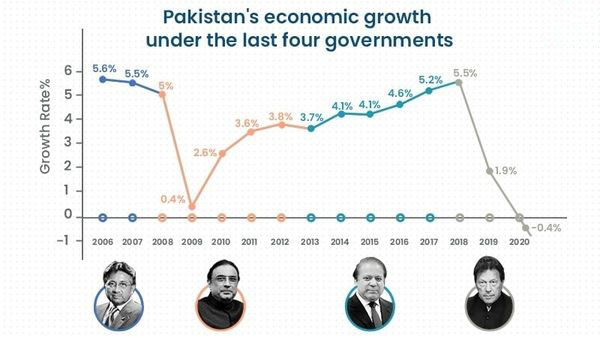Pakistan has a strategic location, abundant resources, and a youthful population. However, demographic shifts and challenges impede social cohesion and economic growth. The Pakistan Bureau of Statistics 2023 census estimated a population of 241.5 million and ranked Pakistan as the fourth most populous country globally. This also meant that it had registered an annual growth rate of 2.1 percent, compared to the world growth rate of just 1.0 percent. Thus, by 2030, Pakistan’s population is expected to surge to 311.5 million, equivalent to an additional 70 million people. This massive population increase will strain already scarce resources and enhance the demand for essential services like social safety, healthcare, and education.
Demographically, the median age in Pakistan is 22, meaning more than 50 percent of the population is below 25. If the country provides quality education, skills and jobs to its youth, this will be an opportunity to increase the country’s economic growth levels and reduce poverty. However, the window of opportunity is closing quickly because Pakistan’s population will be aging rapidly in the coming decades. By 2040, the share of the working-age population (15-64 years) will be around 68 percent, which will start declining to 62 percent by 2060. The proportion of elderly over 65 years will increase from 4 percent between 2020 to 15 percent by 2060. This entails that Pakistan will, in the future, have to provide social security and healthcare for an aging population while maintaining its economic growth and fiscal sustainability.
Pakistan’s population presents both possibilities and problems for the country’s economic growth and development. Pakistan’s future trajectory and possibilities will be determined by how it handles its demographic challenges. If Pakistan can leverage on its demographic dividend while regulating its challenges, it has the potential to become a successful and progressive country. The time to act has arrived.
Urbanization has been an engine of growth for many developing countries, as it increases physical proximity and access to basic services. On the other hand, failure to effectively manage urbanization may result in oversized mega-cities full of pollution, crime, and inequality. Pakistan has to devise an integrated strategy to take care of the population problem for the welfare of its citizens. This requires coordinated efforts from the government, the private sector, civil society, and the international community in the following areas:
Population policy: The growth of the Pakistani population poses a big problem for development. The population policy of Pakistan must outline how the country will deal with issues related to population growth patterns and distribution. The policy should be focused on reducing the high fertility rate, which still stands at 3.6 children per woman, by improving family planning use, especially among the rural women.
Human development: Pakistan faces a human capital crisis, as it ranks low on the HDI scale and has high rates of poverty and malnutrition among its population, especially children. As per the UN Report, Pakistan was ranked number 154 out of 189 nations on the HDI 2021, with approximately 24.3 percent of its population living in poverty and 40.2 percent of its children suffering from malnutrition. Similarly, according to the Pakistan National Human Development Report, Pakistan is the 2nd country where 32 percent of children aged 5 to 16 are out of school. To address this issue, more investment in human capital is needed by revising education, health, and social security policies, which can improve people’s skills, health, and welfare and reduce inequality.
Economic development: Pakistan’s economy suffers from low growth, poverty, and unemployment. As reported by the World Bank, Pakistan’s GDP declined by 0.6 percent in FY23, and the overall poverty rate in the country stood at 24.3 percent. The Pakistan Bureau of Statistics indicated that Pakistan had an unemployment rate of 8.9 percent in FY 21 and -6.8 percent export growth in FY 20. In this regard, creating more and better job opportunities, particularly within the urban context, is essential for developing the country’s economy. The country should also focus on enhancing its productivity and competitiveness, leading to increased exports and foreign investments.
Urban development: Urbanisation is a major challenge for Pakistan, as it has the highest rate in the region and a large and growing urban population. The UN Human Development report shows that Pakistan is leading in urbanization in the region, with over one-third of its citizens residing in cities in 2017. The UN projects that by 2025, roughly 40 percent of the country’s population will live in urban areas. To manage this, Pakistan needs a national urban policy that can improve urban planning and governance, strengthen local government’s service delivery and infrastructure, and promote inclusive and sustainable development for all urban dwellers.
Pakistan’s population presents both possibilities and problems for the country’s economic growth and development. Pakistan’s future trajectory and possibilities will be determined by how it handles its demographic challenges. If Pakistan can leverage on its demographic dividend while regulating its challenges, it has the potential to become a successful and progressive country. The time to act has arrived.






















